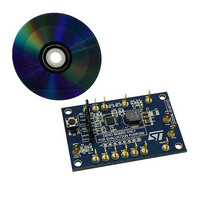STEVAL-ILL021V1 STMicroelectronics, STEVAL-ILL021V1 Datasheet - Page 15

STEVAL-ILL021V1
Manufacturer Part Number
STEVAL-ILL021V1
Description
BOARD EVAL LCD BACKLIGHT LED7707
Manufacturer
STMicroelectronics
Specifications of STEVAL-ILL021V1
Design Resources
STEVAL-ILL021V1 Bill of Material STEVAL-ILL021V1 Schematic
Current - Output / Channel
85mA
Outputs And Type
6, Non-Isolated
Voltage - Output
36 V
Features
Dimmable, Extra 5V Output
Voltage - Input
4.5 ~ 36 V
Utilized Ic / Part
LED7707
Description/function
LCD backlight demonstration board
Operating Voltage
4.5 V to 36 V
Product
Display Modules
Core Chip
LED7707
No. Of Outputs
1
Output Voltage
36V
Dimming Control Type
PWM
Mcu Supported Families
LED7707
Lead Free Status / RoHS Status
Lead free by exemption / RoHS compliant by exemption
For Use With/related Products
LED7707
Other names
497-10044
Available stocks
Company
Part Number
Manufacturer
Quantity
Price
Company:
Part Number:
STEVAL-ILL021V1
Manufacturer:
STMicroelectronics
Quantity:
1
LED7707
Equation 4
In addition, when the FSW pin is tied to AVCC, the LED7707 uses a default 660 kHz fixed
switching frequency, allowing to save a resistor in minimum component-count applications.
Figure 10. Multiple device synchronization
The FSW pin can also be used as synchronization input, allowing the LED7707 to operate
both as master or slave device. If a clock signal with a 220 kHz minimum frequency is
applied to this pin, the device locks synchronized. The signal provided to the FSW pin must
cross the 270 mV threshold in order to be recognized. The minimum pulse width which
allows the synchronizing pulses to be detected is 270 ns. An Internal time-out allows
synchronization as long as the external clock frequency is greater than 220 kHz.
Keeping the FSW pin voltage lower than 270 mV for more than 4.5 µs results in a stop of the
device switching activity. Normal operation is resumed as soon as FSW rises above the
mentioned threshold and the soft-start sequence is repeated.
The SYNC pin is a synchronization output and provides a 35 % (typ.) duty-cycle clock when
the LED7707 is used as master or a replica of the FSW pin when used as slave. It is used to
connect multiple devices in a daisy-chain configuration or to synchronize other switching
converters running in the system with the LED7707 (master operation). When an external
synchronization clock is applied to the FSW pin, the internal oscillator is over-driven: each
switching cycle begins at the rising edge of clock, while the slope compensation (
ramp starts at the falling edge of the same signal. Thus, to prevent sub-harmonic instability
(see
duty-cycle when the boost converter is working in continuous-conduction mode (CCM) in
order to assure that the slope compensation is effective (starts with duty-cycle lower than
40%)
Section 5.1.6
R
FSW
FSW
), the external synchronization clock is required to have a 40 % maximum
AVCC
LED7707
MASTER
SGND
SYNC
R
FSW
=
F
2
SW
5 .
FSW
LED7707
SLAVE
SYNC
Operation description
SGND
SYNC
Figure 11
Sync Out
AM00587v1
15/47
)






















